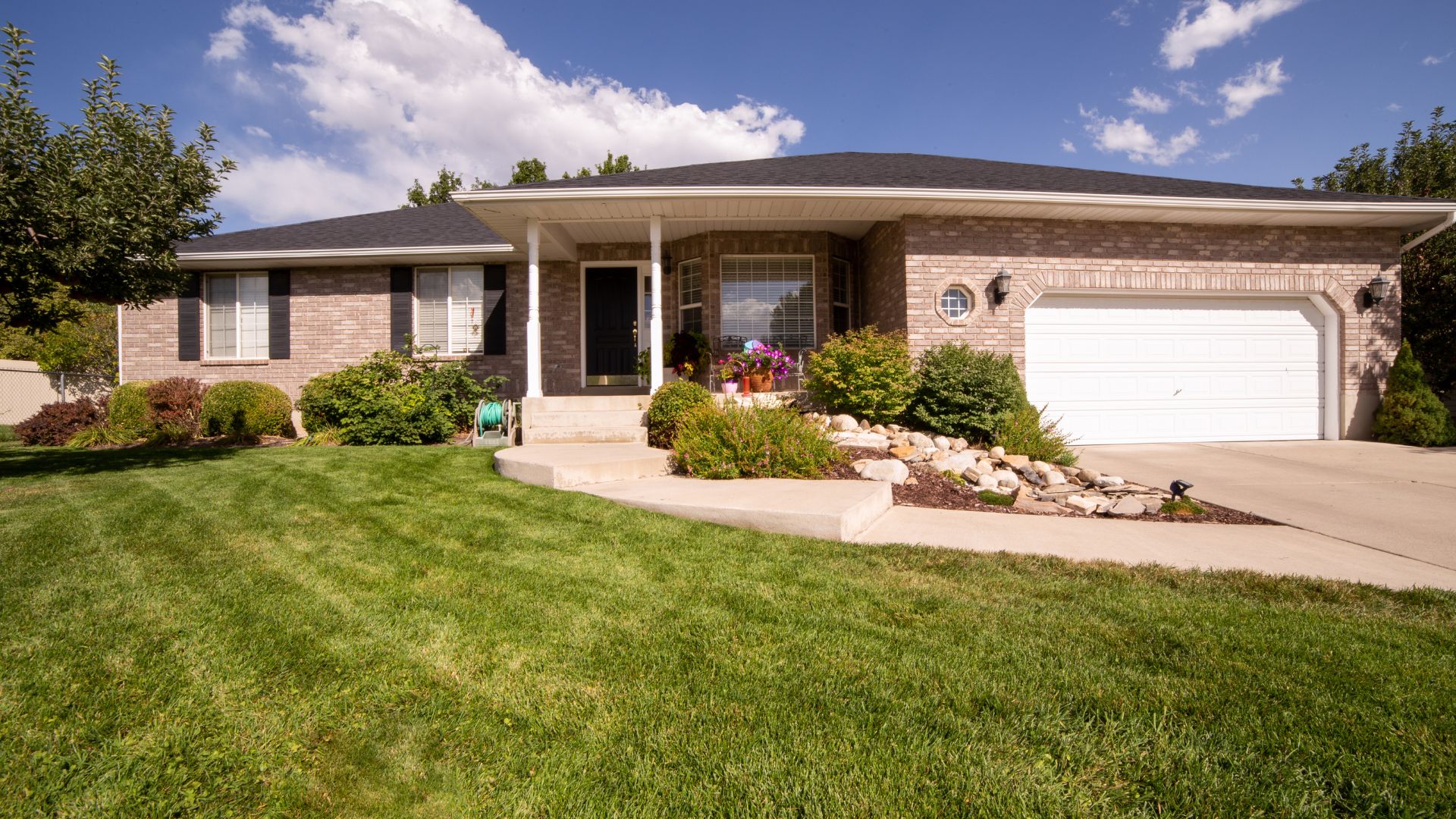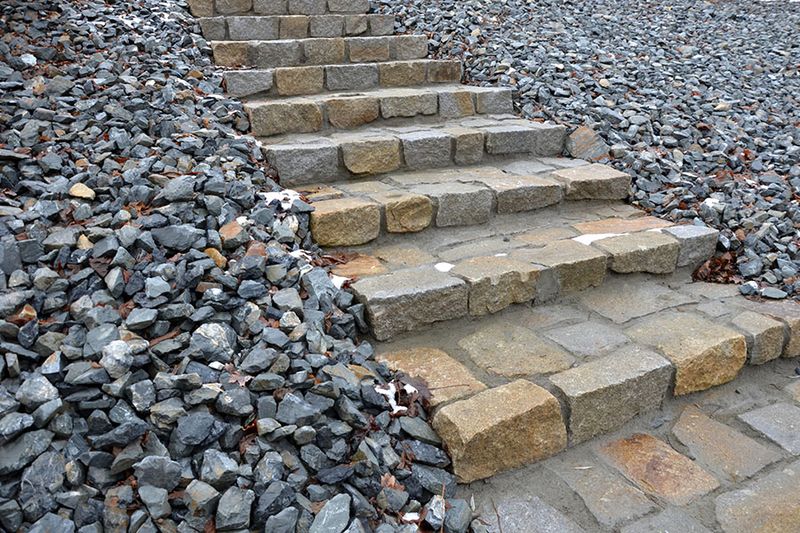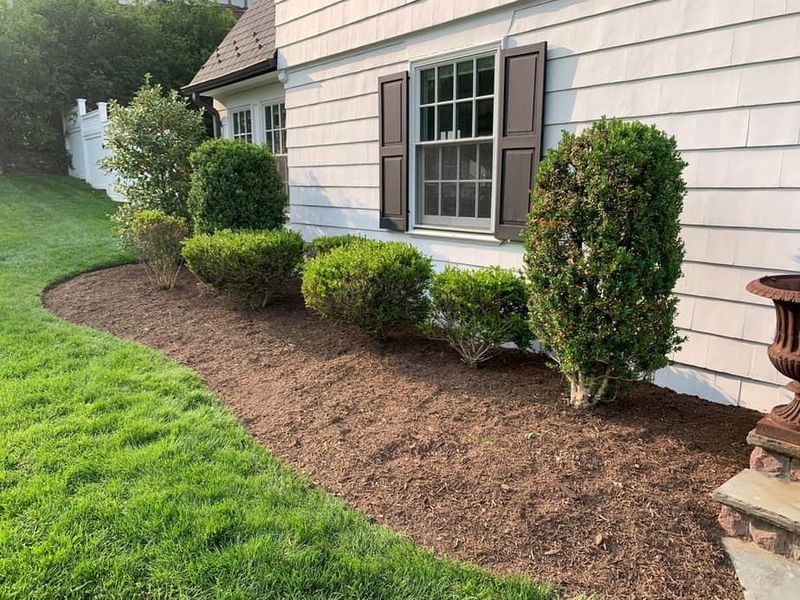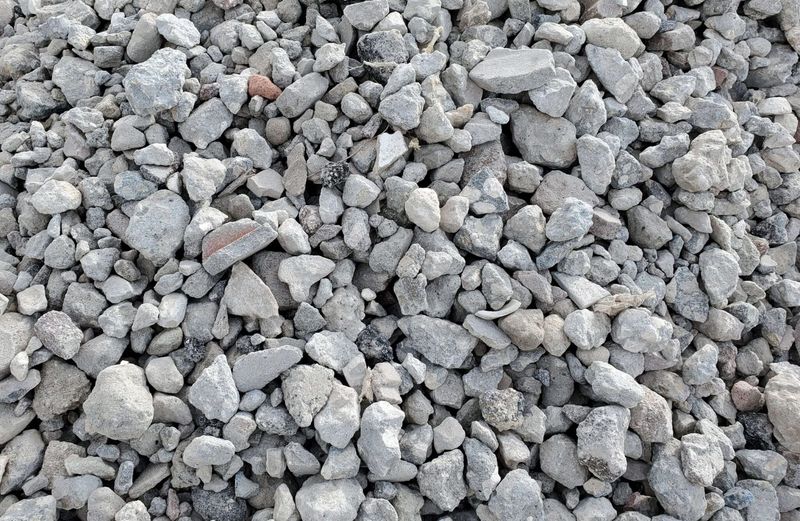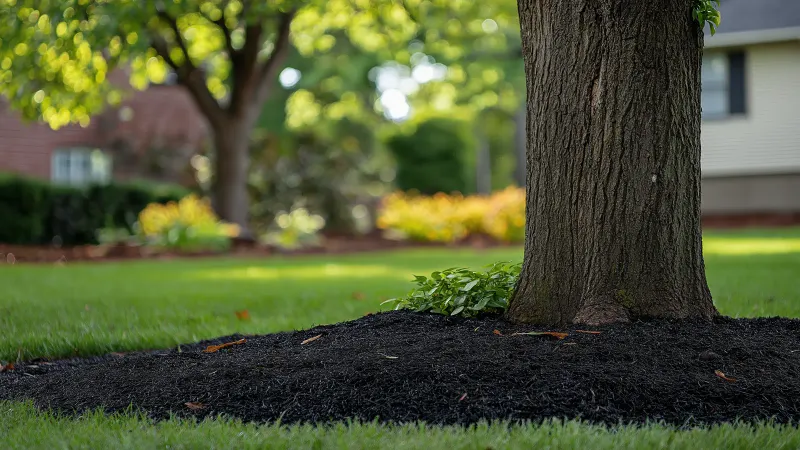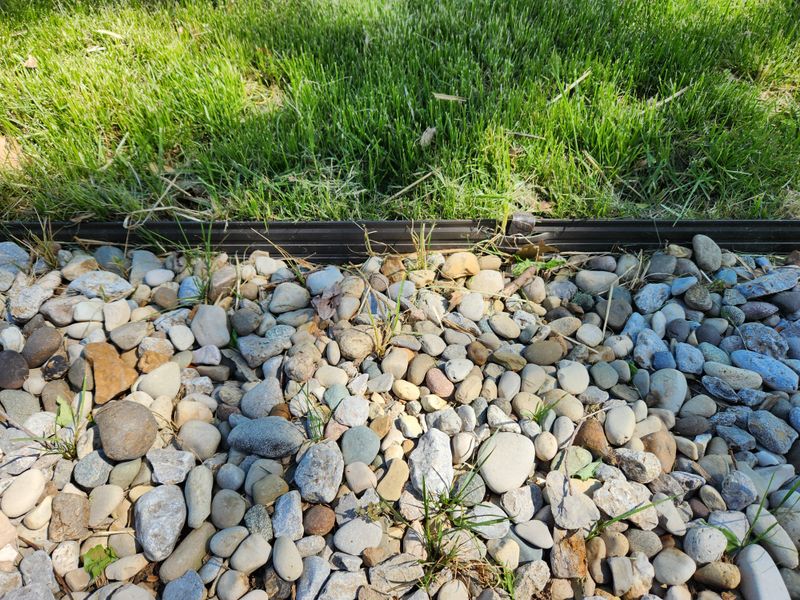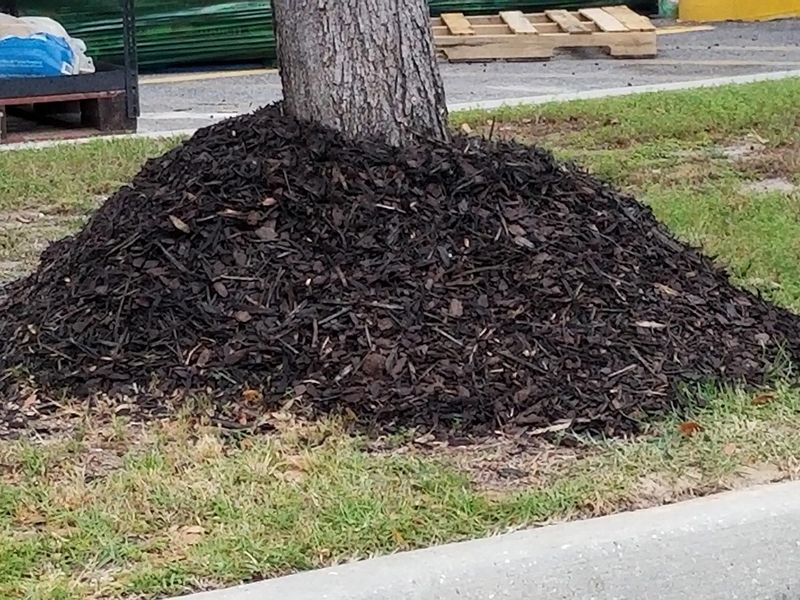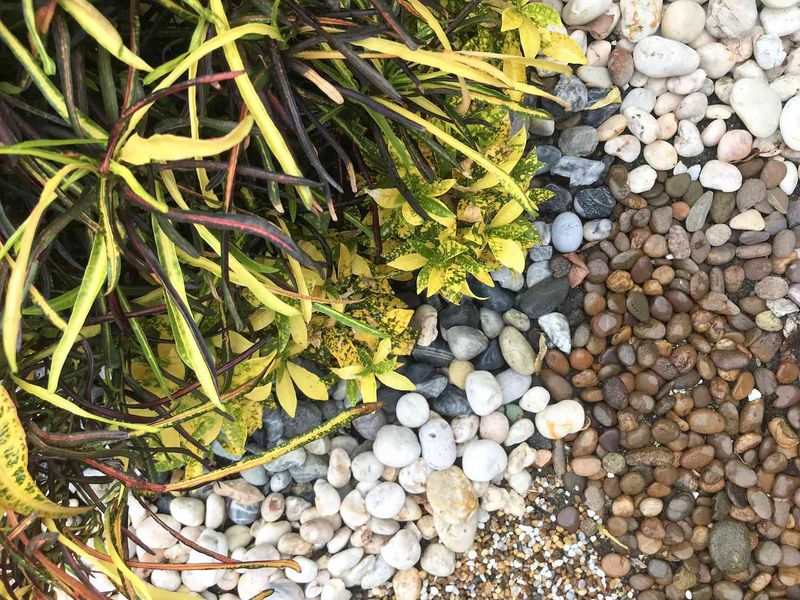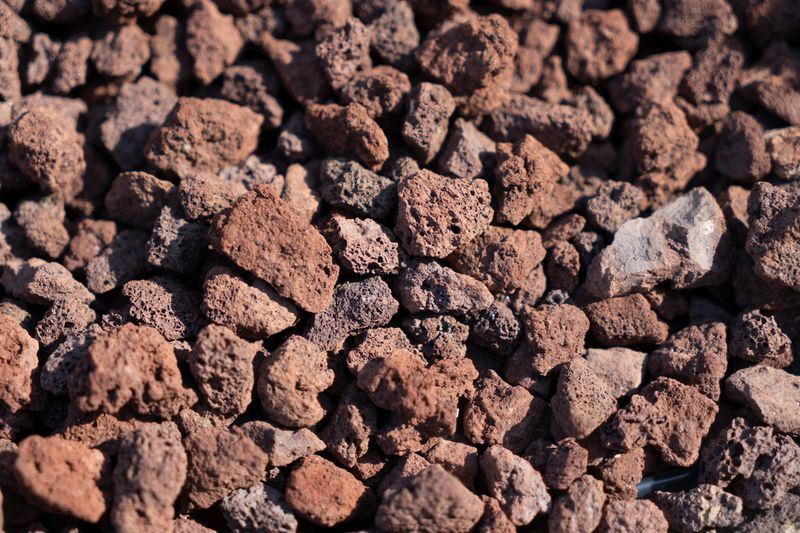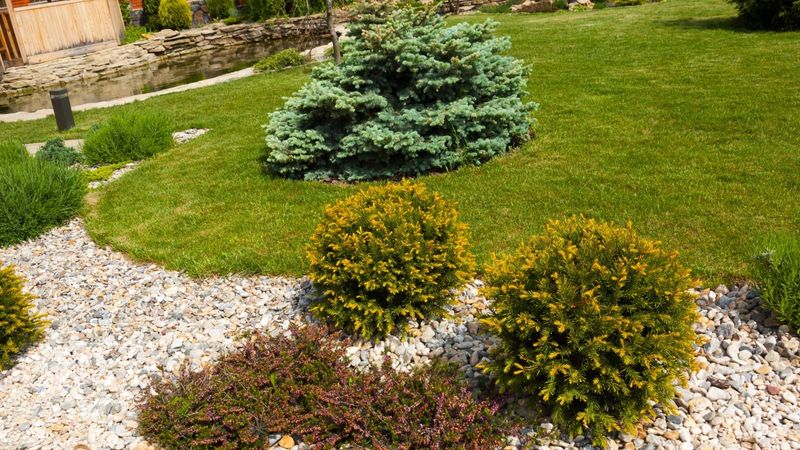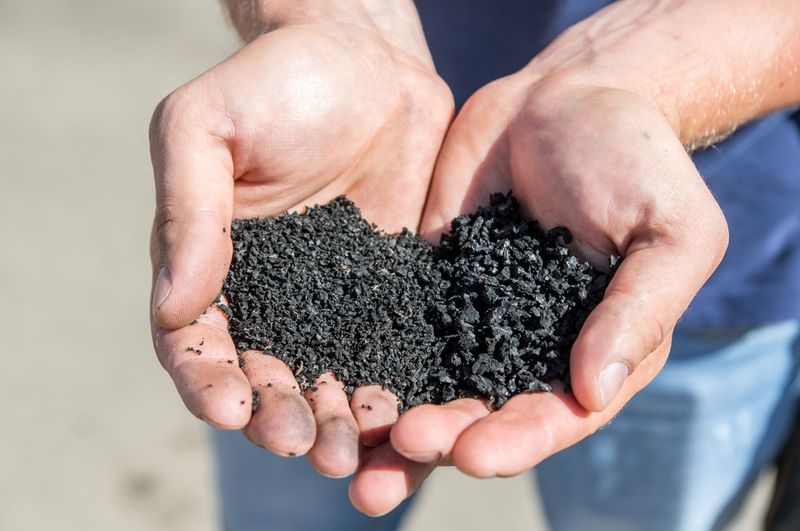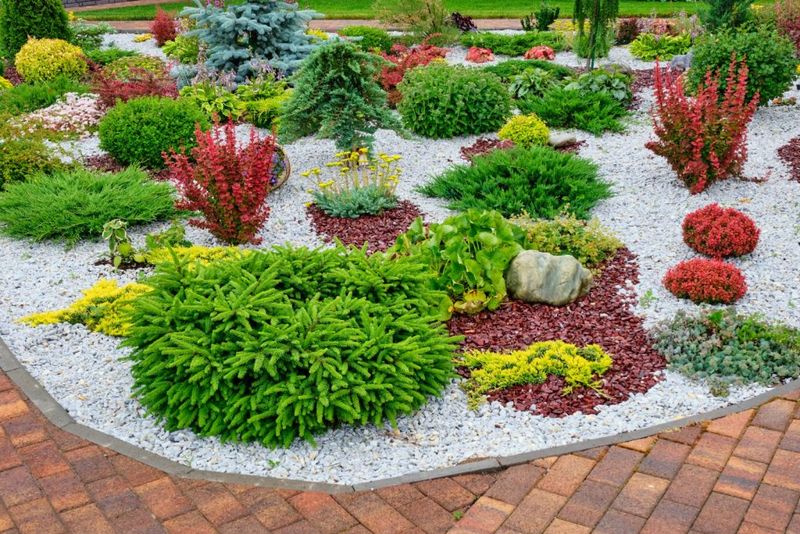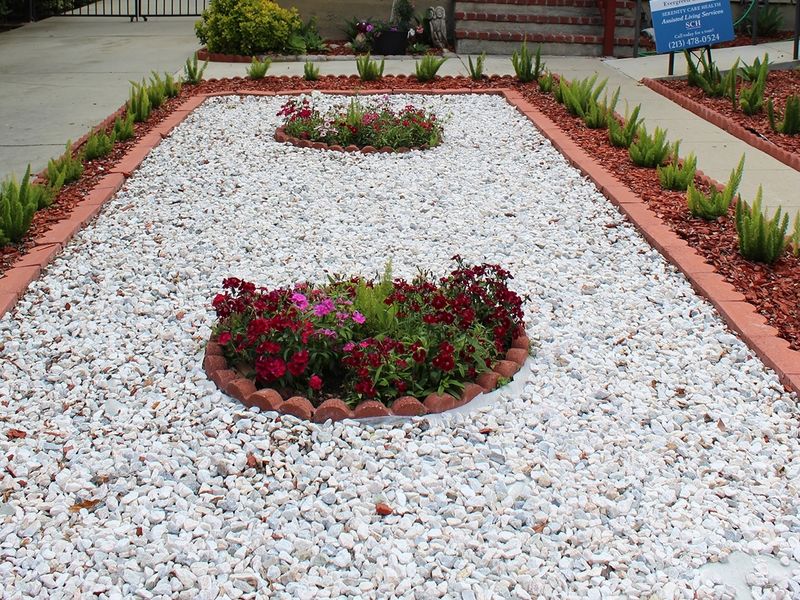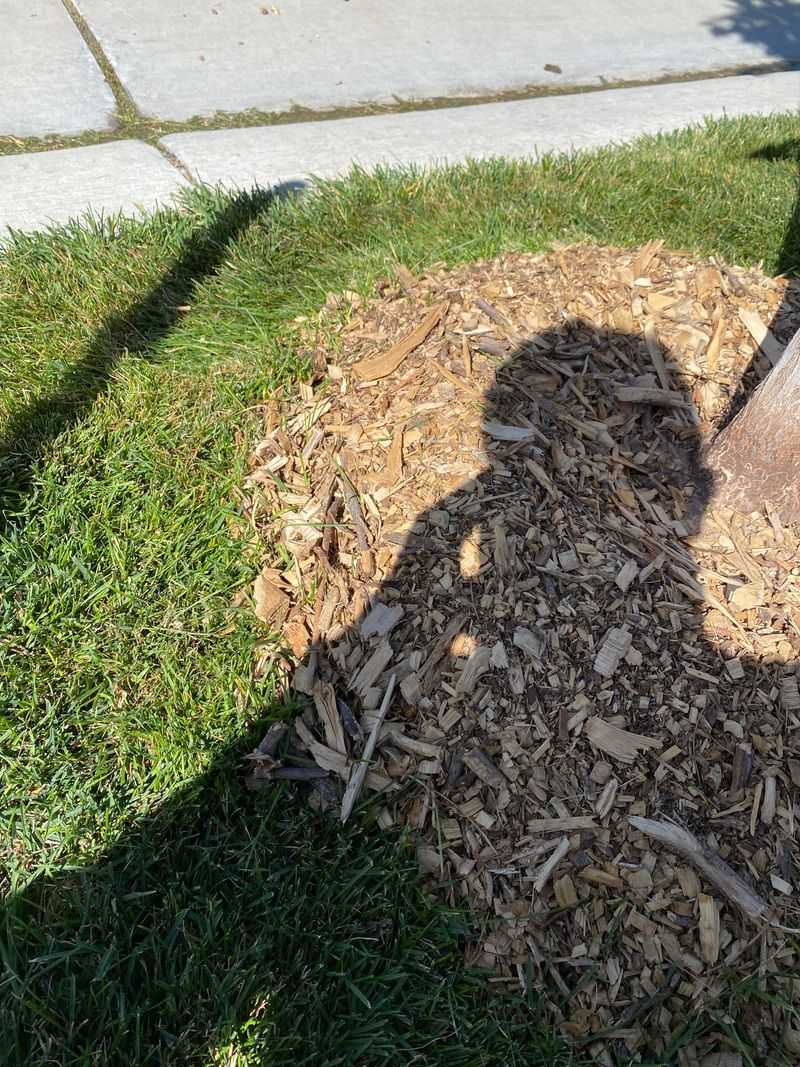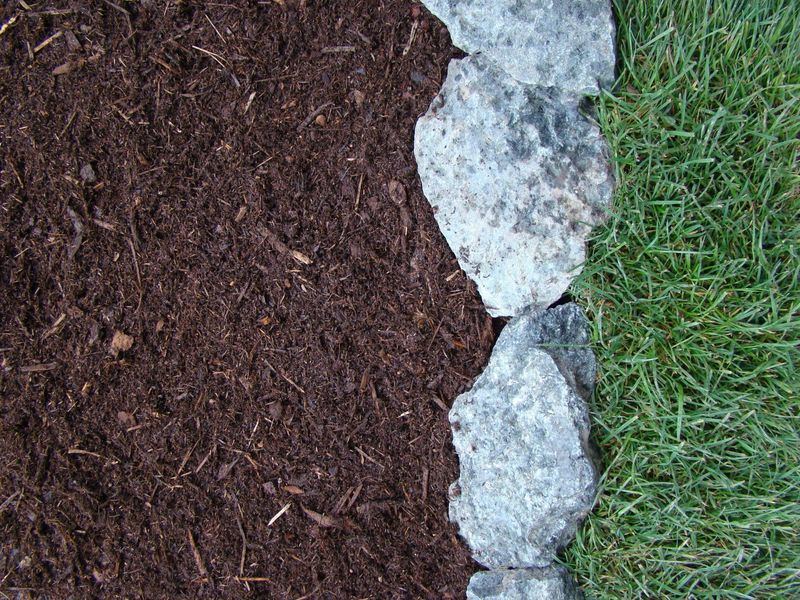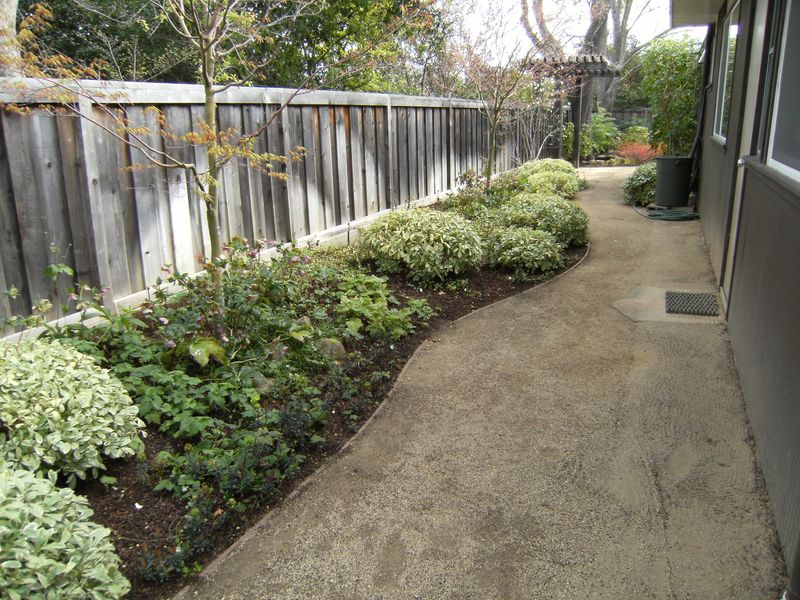Using rocks and mulch in the front yard sounds like an easy win—I thought so too when I first tried to cut down on mowing and weeding. It seemed like a sleek, low-maintenance option that would keep things tidy without much effort. But not all designs are as carefree as they look.
Some setups actually end up being more work than the lawn you were trying to escape. Weeds sneak through, mulch washes away, or rocks get scattered into walkways—it can turn into a constant chore. I’ve definitely had my share of “what was I thinking?” moments out there.
Before you commit to a rock-and-mulch layout, it’s worth knowing which designs tend to cause the most trouble. Let’s look at some common mistakes and better options so you can have a front yard that looks great—and actually is low-maintenance.
1. Scattered Small Pebbles On Sloped Areas
Rain and gravity become your enemies when small pebbles are placed on any kind of incline. After each storm, you’ll find your carefully arranged stones migrating downhill, spilling onto walkways and driveways.
Neighborhood cats may decide your pebble area makes an excellent litter box. The small stones are nearly impossible to clean effectively, leaving behind unpleasant odors and unsanitary conditions.
Consider larger, heavier river rocks for slopes instead. They stay put better during rainfall and are less attractive to feline visitors. Adding strategic plants with strong root systems can also help hold everything in place.
2. Mulch Directly Against House Foundation
Placing mulch right against your home’s foundation creates the perfect highway for termites and other wood-destroying insects. The moisture-retaining properties of mulch create ideal conditions for these pests to thrive and eventually find their way into your home.
The constant moisture against foundation walls can lead to mold growth and accelerated deterioration of siding. During heavy rains, wet mulch can splash soil onto your home’s exterior, creating stubborn stains.
Keep a 6-inch gap between mulch and your foundation. Use a border of gravel in this space instead, which drains better and doesn’t attract wood-destroying insects.
3. Marble Chips In High-Traffic Areas
Those gleaming white marble chips look stunning in magazine photos but become a maintenance disaster in real life. Their bright color shows every bit of dirt, leaf debris, and soil that lands on them, requiring frequent rinsing or replacement to maintain their clean look.
Walking on marble chips quickly displaces them, creating uneven areas and bare spots. They’re also slippery when wet, posing a serious hazard on pathways or near entrances.
For high-traffic areas, consider decomposed granite or stabilized path materials that stay in place. If you love the look of marble, use it in contained accent areas away from main walkways.
4. Black Dyed Mulch Under Trees
The deep, rich color of black mulch fades quickly, especially in sunny areas, turning an unappealing grayish color within weeks. This means frequent replacement to maintain that fresh, dark look, costing you time and money.
Black mulch absorbs heat intensely, potentially stressing nearby plants and tree roots. The dyes used in colored mulch can sometimes contain chemicals that may leach into soil and affect plant health over time.
Try natural cedar or cypress mulch instead. These options retain their color longer and don’t create as much heat stress for your plants. They also break down more naturally, improving soil quality as they decompose.
5. Rock Gardens With Weed Barrier Fabric
Landscape fabric under rocks seems like a smart weed prevention strategy until decomposing leaves and airborne soil create a thin layer of dirt on top. Weeds happily grow in this new medium, but now their roots intertwine with the fabric, making them nearly impossible to remove completely.
As the fabric ages, it deteriorates and shreds, creating unsightly pieces that work their way to the surface between your rocks. Removing old, deteriorated fabric requires removing and replacing all your rock material—a massive undertaking.
Skip the fabric and use cardboard or newspaper as a biodegradable weed barrier instead. Top with several inches of rocks to effectively suppress weeds without creating future headaches.
6. Mulch Volcanoes Around Trees
Piling mulch high against tree trunks (creating what professionals call “mulch volcanoes”) might look tidy, but it’s actually harmful to trees. The constant moisture against the bark encourages fungal diseases and decay, potentially killing your trees over time.
Rodents and insects love these mulch mounds, using them as shelter while they chew on the protected bark. The excessive mulch also prevents proper air exchange to roots and can lead to girdling roots that strangle the tree.
Apply mulch in a flat, donut shape around trees instead, keeping it 3-4 inches away from the trunk. A proper 2-3 inch layer provides benefits without creating health problems for your valuable trees.
7. Mixed-Size River Rocks In Beds
Combining different sizes of river rocks creates an immediate problem when leaves and debris fall. Small particles work their way down between larger rocks, becoming nearly impossible to remove without completely dismantling the entire bed. Blowers just scatter the smaller rocks everywhere.
Weeding becomes particularly challenging as you can’t easily rake or disturb the surface without displacing your rock arrangement. Water tends to pool in areas where smaller rocks create dense patches, potentially causing drainage issues.
Use uniformly sized rocks in your beds. If you want visual interest, create separate sections with different sizes rather than mixing them together. This approach makes maintenance much more manageable.
8. Lava Rock Borders Around Plants
Lava rock’s sharp, porous texture makes it a magnet for decomposing plant material. Dead leaves, flowers, and other debris get caught in the countless tiny holes and crevices, becoming almost impossible to remove without handling each rock individually.
The rough surface damages lawn equipment and makes weeding by hand painful. When lava rock breaks down over time, it crumbles into smaller pieces that mix with soil, creating a permanent problem that’s difficult to remedy.
Replace lava rock with smooth river stones or cobbles that don’t trap debris. For areas around delicate plants, consider pine straw or fine wood chips that can be easily refreshed each season.
9. Crushed Shell Pathways Near Entrances
Crushed shells look beautifully coastal but transform into sharp, foot-piercing hazards as they break down further with foot traffic. The fragments inevitably get tracked into your home, scratching wood floors and becoming painfully embedded in carpets.
Shells develop an unpleasant odor when wet, especially in the first few months after installation. They also provide poor drainage in heavy rain, creating muddy patches that become slippery hazard zones.
For pathways near doors, stick with solid pavers or large stepping stones with proper drainage underneath. If you love the beach look, use shells in contained garden beds away from high-traffic areas.
10. Rubber Mulch In Sunny Locations
Rubber mulch might seem indestructible, but sun exposure causes it to break down and lose color over time. As it deteriorates, it releases chemicals into your soil that can harm plants and affect soil quality for years to come.
During hot summer days, rubber mulch can reach scorching temperatures that damage plant roots and create an almost unbearable heat island effect in your front yard. It also produces an unpleasant smell when temperatures rise.
For sunny areas, try inorganic options like decomposed granite or organic mulches like pine straw that don’t overheat as dramatically. These alternatives provide protection without the heat retention and chemical concerns.
11. Pea Gravel Surrounding Shallow-Rooted Shrubs
Pea gravel’s small, rounded nature means it’s constantly on the move. When placed around shallow-rooted shrubs, routine tasks like raking leaves or removing debris often dislodge plant roots as the gravel shifts and rolls.
The small stones work their way into the plant’s crown area over time, causing rot and creating hiding spots for slugs and other pests. During heavy rainfall, the lightweight gravel can wash away, requiring regular replenishment.
Around delicate shrubs, use a lightweight organic mulch like wood chips that won’t damage roots when disturbed. Create a gravel border beyond the plant’s drip line if you still want the decorative stone look.
12. White Quartz Rock In Shaded Areas
Pristine white quartz rock quickly transforms into a green, algae-covered eyesore in shaded locations. The lack of sunlight combined with moisture creates perfect conditions for moss, algae, and mildew growth on the bright surfaces.
Cleaning these rocks requires harsh chemicals or laborious pressure washing, often several times per year. The bright white color also shows every bit of fallen debris, from leaves to soil, making it look perpetually dirty.
In shaded areas, darker-colored stone or mulch will hide discoloration better. If you’re set on using decorative quartz, limit it to sunny spots where algae has less chance of taking hold.
13. Mulched Areas Without Proper Edging
Without sturdy edging, mulch constantly migrates onto lawns, sidewalks, and driveways. After every heavy rain or strong wind, you’ll find yourself sweeping mulch back into beds—a never-ending battle that becomes increasingly frustrating.
Lawn mowers catch and scatter mulch particles when they stray into grass areas, creating dangerous projectiles and damaging equipment. The blurred line between mulch and lawn also creates an untidy appearance that detracts from your landscaping efforts.
Install metal, stone, or plastic edging that extends at least 2 inches below ground level. Make sure it rises 1-2 inches above the mulch line to effectively contain materials even during heavy rain.
14. Decorative Boulders Surrounded By Mulch
Large decorative boulders create problematic “dead zones” where standard mulch rakes and tools can’t reach. Leaves and debris collect in these tight spaces, decomposing and creating perfect weed germination spots that are difficult to access.
The junction where boulder meets mulch often collects water, creating muddy areas that splash onto the rock’s surface, staining it over time. Mulch decomposition accelerates in these moisture traps, requiring more frequent replenishment.
Place boulders on a bed of small river rocks instead of mulch. This creates better drainage and allows debris to be removed more easily with a leaf blower without displacing the underlying material.
15. Crushed Granite On Poorly Graded Surfaces
Crushed granite installed on improperly graded areas becomes a water-trapping mess during rainy seasons. Without proper drainage, the granite surface develops depressions that hold water, creating muddy patches that never seem to dry out.
These wet spots quickly become breeding grounds for mosquitoes and algae. The shifting wet material creates an unstable walking surface that can be dangerous, especially for elderly visitors or during freezing weather.
Before installing crushed granite, ensure proper grading with at least a 2% slope away from structures. Add a drainage layer of coarse gravel underneath to prevent water accumulation and extend the life of your granite surface.

